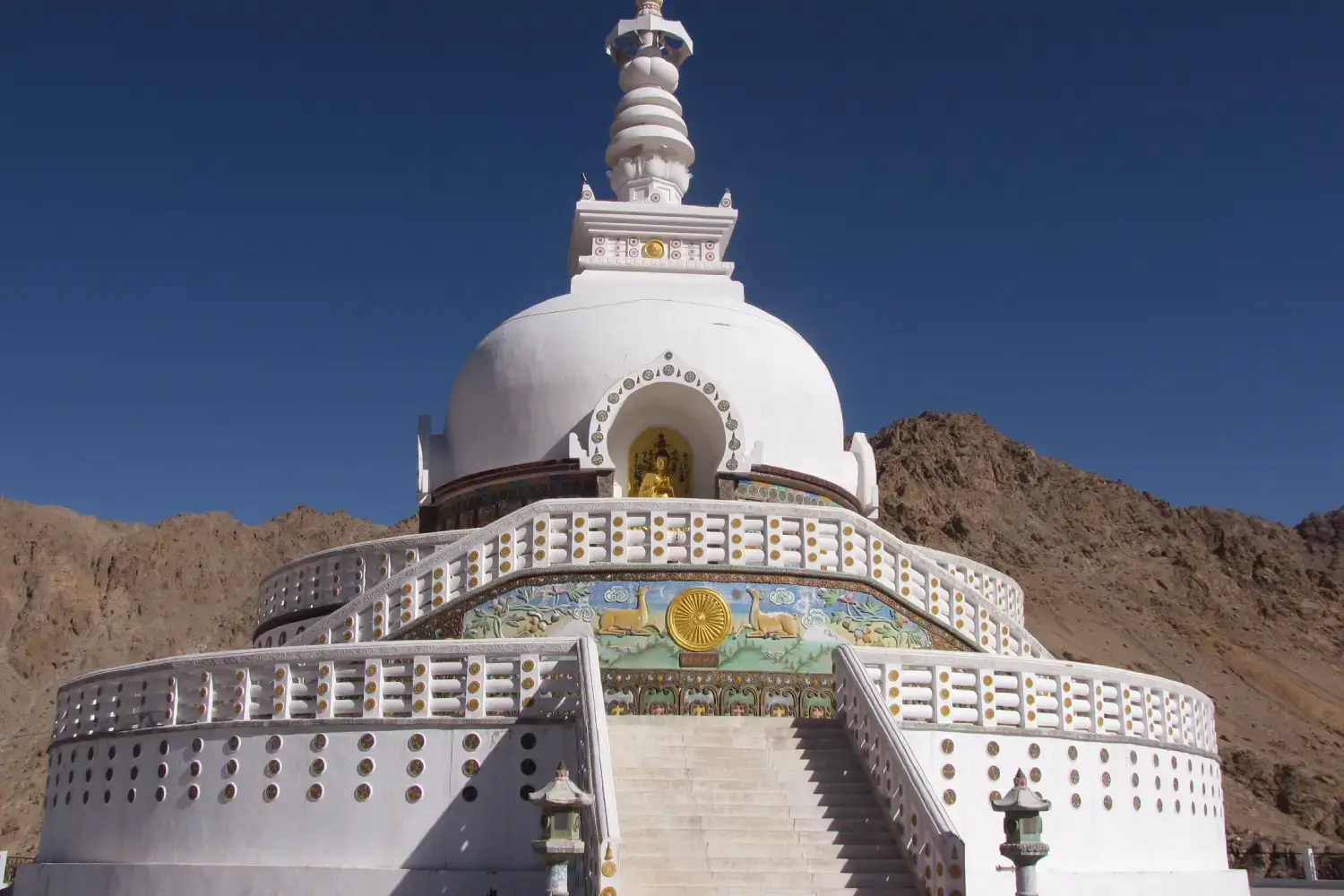6 Must Visit Buddhist Stupas in India
India’s soil has been a witness to the Buddha’s enlightenment, sacred sermons, and even his passing away, making way for some of the most important pilgrimage sites that can be visited on a Buddhist Circuit Tour in India. With sites that contain the bodily remains of the Buddha, to places that have seen and felt the presence of the Buddha himself, the various stupas dotted along the expanse of the country speak for themselves, radiating a sense of calm and spirituality, experienced by devotees and tourists alike, every day.
Home to some of the most magnificent stupas in the world, here is a list of popular stupas in India that you must visit on a Buddhist Circuit Tour in India:
- Mahabodhi Stupa
- Dhamek Stupa
- Sanchi Stupa
- Ramabhar Stupa
- Shanti Stupa
- Do Drul Chorten
Mahabodhi Stupa, Bihar
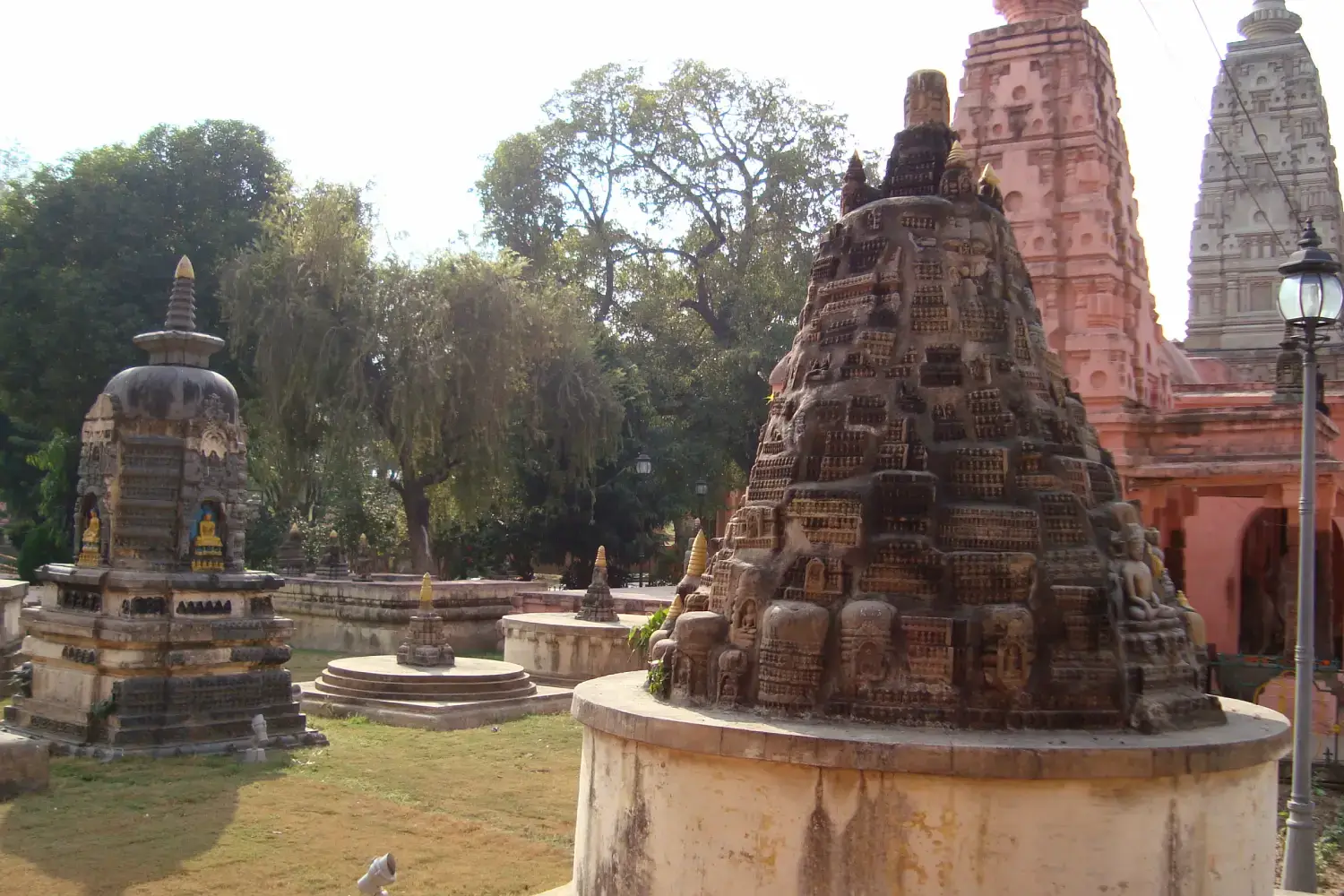
The Beginnings of Buddhism in India
Located in the north Indian state of Bihar, the Mahabodhi Stupa is among the most famous stupa in India. Listed as a world heritage site under UNESCO, Mahabodhi Stupa is an important part of Buddhist heritage in India. It is here, at the site of the stupa complex that the Buddha attained enlightenment over 2,500 years ago while sitting under the Bodhi tree that still exists at the temple complex.
A must-visit destination on the Buddhist Circuit Tour, the Mahabodhi Stupa sees visitors from around the world given the importance of this site in the life of the Buddha. A place that helped the Buddha guide the world to grander learnings about life, Mahabodhi Complex has numerous sacred structures as well. The main complex includes the tall temple with a stupa on top, the Vajrasana, votive stupas, and sites related to the enlightenment of the Buddha, that include the Bodhi Tree where the Buddha spent his first week during his enlightenment, the Animesh Lochan Chaitya, the Ratnachakrama, the Ratna Ghar Chaitya, the Ajapala Nigrodha Tree, the Lotus Pond, and the Rajyatana Tree, where the Buddha spent his subsequent weeks at the Stupa complex.
Dhamek Stupa, Uttar Pradesh
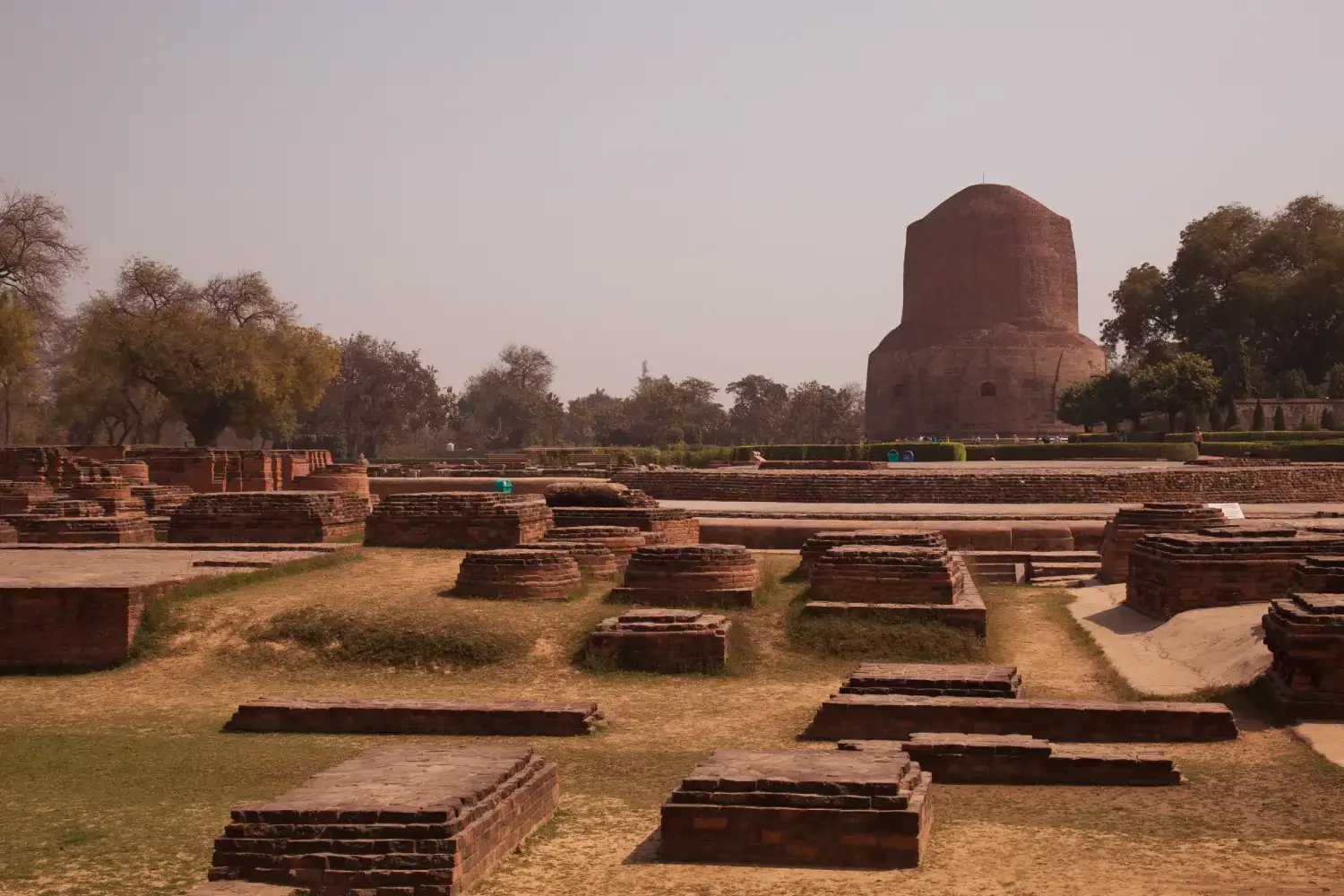
Forming the Foundation of Buddhism
An important Buddhist center in India, the Dhamek Stupa is located near the holy city of Varanasi. The Stupa is said to be the site where the Buddha gave out his first ever sermon after he attained enlightenment. It is here, during the sermon that he gave to his disciples and the world, the eightfold path, the principles that form the basis of the religion.
Built in a combination of stone and brick, the Dhamek Stupa is an important part of Buddhist heritage in India. Originally constructed by the Mauryan Emperor Ashoka, subsequent parts of the structure came later in time. Parts of the stupa can be dated to the days of Emperor Ashoka’s time period and others to the Gupta period, with walls containing beautiful carvings of humans, birds, flowers, and animals, along with inscriptions in the Brahmi script. Forming a part of the magnificent stupas that you must-visit when visiting on a Buddhist Tourist Circuit, the Dhamek Stupa is important for playing an irreversible role in the establishment and spread of Buddhism further. The perfect place to explore history and spirituality, Dhamek Stupa’s beauty and serenity is enough to delight visitors.
Sanchi Stupa, Madhya Pradesh
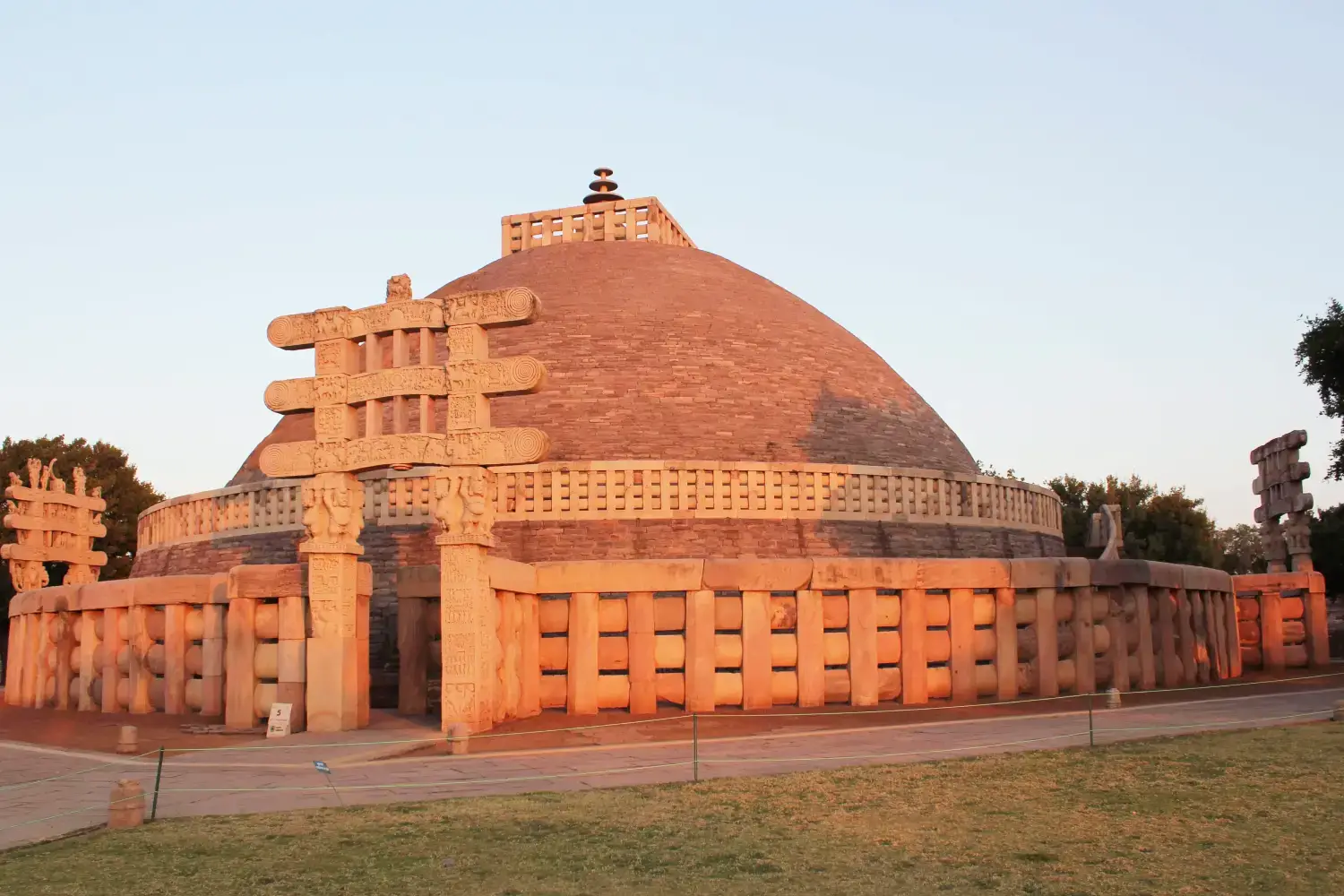
With their Ornate and Notable Carvings
Madhya Pradesh’s Sanchi Stupa easily forms one of the famous Buddhist stupas in India. Listed under UNESCO as a world heritage site, Sanchi Stupa is known for being an important part of India’s heritage. Another structure developed by the Mauryan Emperor, Ashoka, the stupa sees visitors from all over the word, who come here for its significance in history and for the religion of Buddhism.
Sanchi’s Stupa complex is a collection of numerous stupas that are dotted along its landscape. Beginning from the major stupa, or Stupa 1, it stands adorned with intricately carved sculptures and gateways that tell the story and events associated with the life of the Buddha. Other structures that can be visited at the stupa complex include the ruins of what was once a Buddhist monastery along Stupa 1, other stupas numbered as Stupa 2, and Stupa 3, as well as the beautifully carved gateways of these stupas that make them so easily recognizable. Built by Emperor Ashoka, the complex also displays his signature Ashoka Chakra, and the Lion Pillar as well. Considered to be among the most popular stupas in India and the world, Sanchi Stupa is said to have been made to retain the mortal remains of the Buddha within.
Ramabhar Stupa, Uttar Pradesh
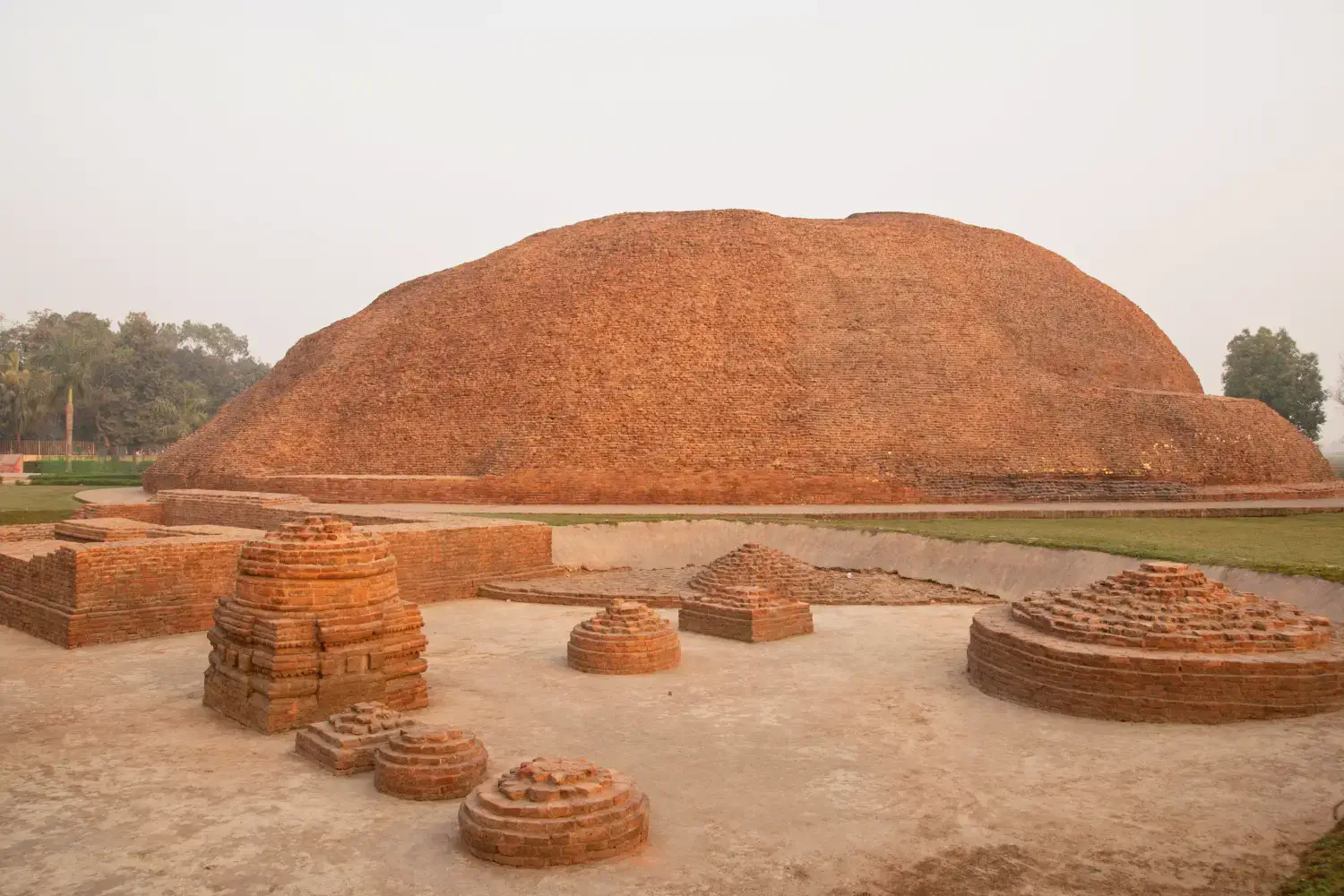
Buddha’s Last Time on Earth
One of the most important Buddhist sites in India, the Ramabhar Stupa in Uttar Pradesh marks a particularly significant event in the history of Buddhism. Forming the foundation of Buddhist Tourism in India, the Ramabhar Stupa is the place where the Buddha’s worldly body was cremated after he attained Mahaparinirvana and passed away from his earthly abode.
The land that belonged to the Malla Kingdom, the stupa has been constructed over a portion of the ashes of the Buddha, making this site a popular one for tourists. Referred to as the ‘Mukut-Bandhan-Chaitya’, the site of the stupa finds mention in the ancient Buddhist texts, making it among the must-visit destinations on the Buddhist Circuit Tour. Made entirely out of bricks, the Ramabhar Stupa is an important structure that is also a significant heritage site preserving the history and practices of Buddhism in the region. At the stupa, devotees who visit here often perform circumambulation of the entire stupa in worship of the Buddha during the circuit tour. A sacred site that is not only important for his devotees in India, but across the world as well, the Ramabhar Stupa forms an essential part of the Buddhist Circuit Tour in India.
Shanti Stupa, Ladakh
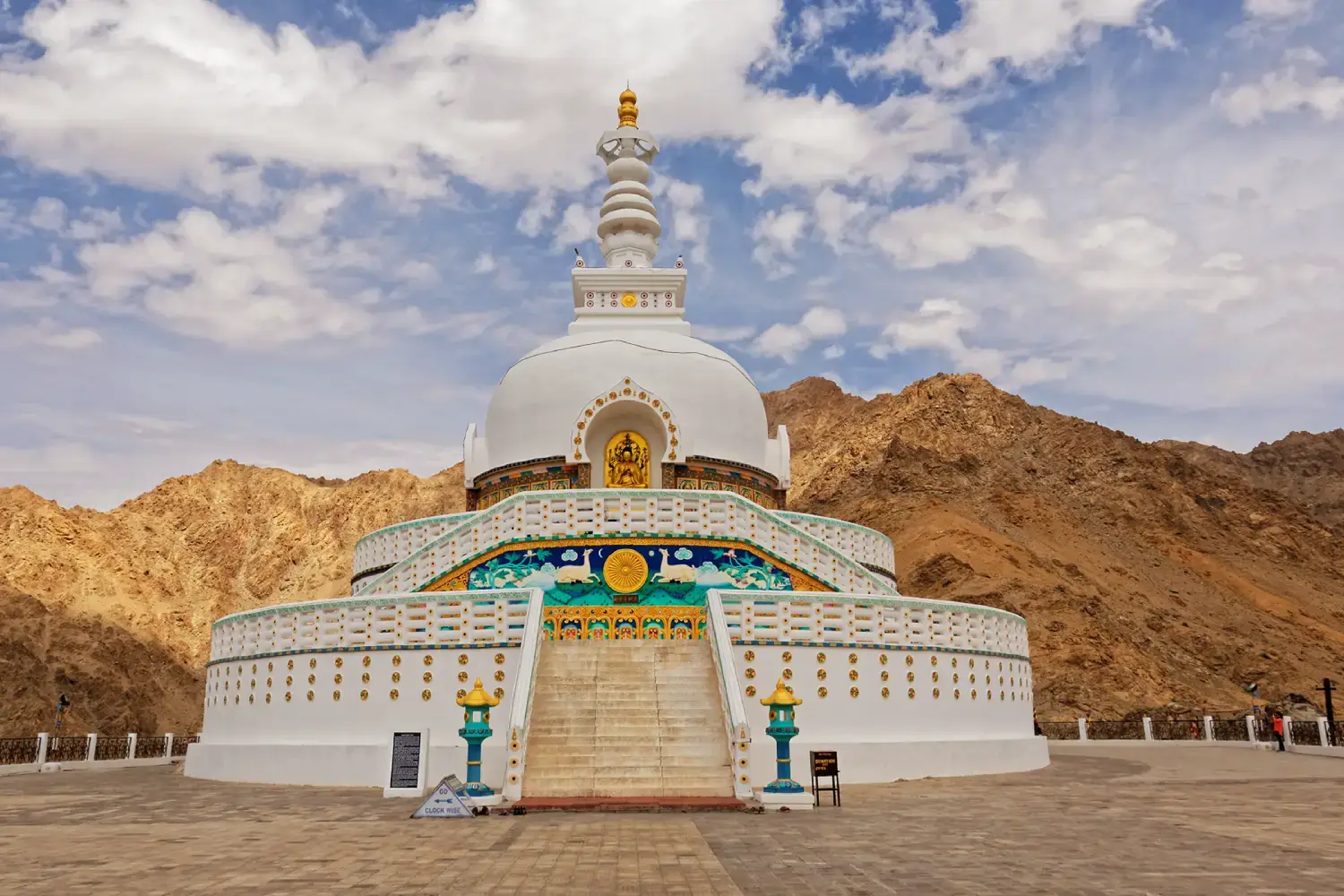
A Symbol of Peace and Prosperity
Holding the relics of the Buddha at its base, the Shanti Stupa at Ladakh is among the important Buddhist centers in India. A white-colored stupa, the Shanti Stupa was built in 1991 by the Japanese Buddhist, and laid down by the 14th Dalai Lama himself. Overlooking the city of Leh, the stupa offers panoramic views of the entire city, making it one of the must-visit Buddhist pilgrimage destinations to explore for a serene and spiritual experience among the Himalayas.
Located atop a hill, the stupa has been built in two levels and can be reached by a climb of 500 steps. The first level of the stupa will lead to a Dharmachakra, with an image of the Buddha turning the Dharmachakra wheel, with the second level with an image that depicts the birth, meditation and death of Buddha in vibrant colors. An important Buddhist pilgrimage site that was made with a dedicated collaboration by the Buddhists of Ladakh and Japan, the Stupa was built with an aim to promote world peace, prosperity, and the establishment of Buddhism over 2,500 years ago.
Do Drul Chorten, Sikkim

Banishing the Evil Spirits
A gem of the capital city of Sikkim, the Do Drul Chorten is a Buddhist Stupa built in the city of Gangtok in 1946. This stupa, recognized by its white color and golden spire, was built by Trulshik Rinpoche, the teacher of the 14th Dalai Lama, and is dedicated to the worship of Vajrakilaya or Dorjee Rinpoche, and important deity for the Nygma Sect of Tibetan Buddhism.
Containing within the stupa complex are 108 prayer wheels with carvings of sacred mantras, along with sacred Buddhist manuscripts and relics related to Dorjee Rinpoche. Along with the main stupa, the complex is also home to smaller stupas as well, with one of them even being dedicated to Trulshik Rinpoche himself, as well as featuring giant statues of Guru Padmasambhava, the learned Buddhist scholar, popular for the spread of Tantric Buddhism in the region of the Himalayas.
According to a legend revolving around the stupa, it is said to have been built at the site once infested with evil spirits, known to hamper the lives of people passing through, until Trulshik Rinpoche drove out all the evil spirits, later establishing the sacred stupa itself, that today forms one of the magnificent stupas in India to visit on a pilgrimage tour.
The land where Buddhism began its advent over 2,500 years ago, India has a lot to show for itself when it comes to Buddhist pilgrimage sites that can be covered efficiently on a Buddhist pilgrimage tour of India. With stupas that symbolize world peace, and positivity, to stupas that have felt the presence of the Buddha himself, there are numerous stupas that you can explore for its spirituality, significance, and place in history as you explore some of the must-visit Buddhist destinations on a pilgrimage tour.
You May Also Like to Read
- Best Places to Visit in Buddha Circuit Tour Uttar Pradesh
- Bihar Buddhist Circuit Tour- 5 Best Places to Visit
- Best Buddhist Places to Visit in North East India
- 10 Best Buddhist Temples to Visit in World
- Popular Buddhist Festivals in India
- Top Buddhist Destinations in India
- Popular Monasteries in India
- Top Buddhist Tourism Places to Visit in Madhya Pradesh
- Top Buddhist Tourist Places in Gujarat
- Popular Stupas in India
- Nepal Buddha Tour- Best Places to Visit
- Best Buddhist Places to Visit in Himachal Pradesh
- Odisha Buddhist Circuit Tour Places
